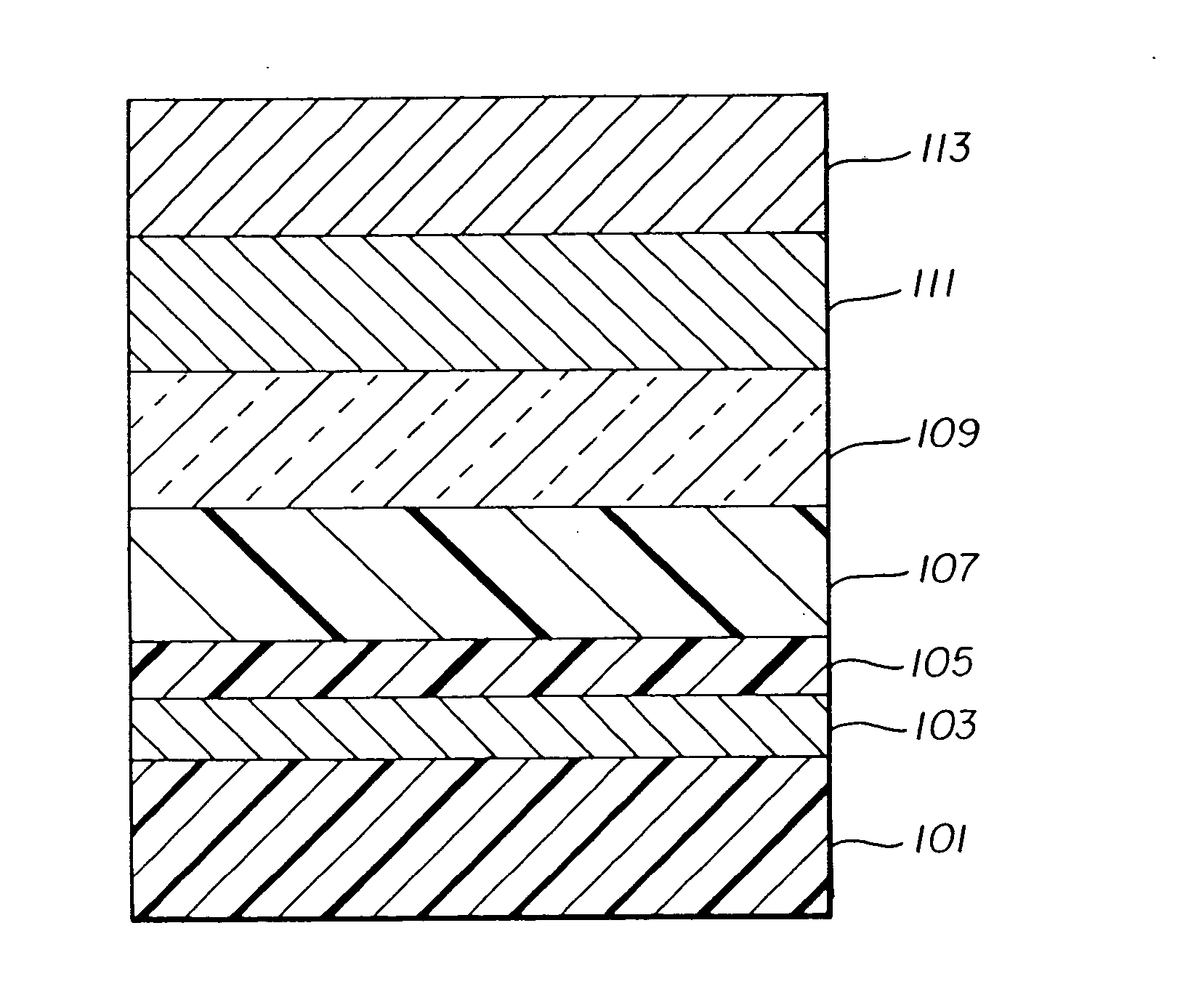Green organic light-emitting diodes
a light-emitting diode and organic technology, applied in the field of organic electroluminescent devices, can solve the problems of insufficient stability of quinacridone derivatives as taught in the prior art, a barrier to many desirable applications, and a performance limitation that is not suitable for many desirable applications
- Summary
- Abstract
- Description
- Claims
- Application Information
AI Technical Summary
Benefits of technology
Problems solved by technology
Method used
Image
Examples
examples
The invention and its advantages are further illustrated by the specific examples that follow.
Examples 1, 5, 9, 13, 18, 23
Comparative EL Devices
Comparative EL devices not satisfying the requirements of the invention were constructed in the following manner:
A glass substrate coated with a 42 nm layer of indium-tin oxide (ITO) as the anode was sequentially ultrasonicated in a commercial detergent, rinsed in deionized water, degreased in toluene vapor and exposed to oxygen plasma for about 1 min. a) Over the ITO was deposited a 1 nm fluorocarbon hole-injecting layer (CFx) by plasma-assisted deposition of CHF3. b) A hole-transporting layer of N,N′-di-1-naphthalenyl-N,N′-diphenyl-4,4′-diaminobiphenyl (NPB) having a thickness of 75 nm was then evaporated from a tantalum boat. c) A 37.5 nm light-emitting layer of Alq doped with a first dopant from the “Inv-a” category, in an amount ranging from 0.25% to 2% was then deposited onto the hole-transporting layer. These materials were ...
examples 2-4 , 6-8 , 10-12 , 14-17 , 19-22 , 24-27
Examples 2-4, 6-8, 10-12, 14-17, 19-22, 24-27
Inventive EL Devices
EL inventive devices were fabricated in the same manner as described above except that, the Alq emitting layer is doped with a combination of two dopants (the emitting “Inv-a” first dopant and the stabilizing “Inv-b” second dopant), one from each category Inv-a and Inv-b. The exact dopant percentages used are reported in Tables 1-6.
The cells thus formed in Examples 1-27 were tested for efficiency in the form of luminance yield (cd / A) measured at 20 mA / cm2. CIE color x and y coordinates were determined. It is desirable to have a luminance yield of at least about 7 cd / A and preferably greater than about 8 cd / A. An acceptable green for a high quality full color display device has CIEx of no more than about 0.35 and CIEy no less than about 0.62. The luminance loss was measured by subjecting the cells to a constant current density of 20 mA / cm2 at 25° C. / 70° C., for various amounts of time that are specified for each ind...
PUM
| Property | Measurement | Unit |
|---|---|---|
| Fraction | aaaaa | aaaaa |
| Nanoscale particle size | aaaaa | aaaaa |
| Nanoscale particle size | aaaaa | aaaaa |
Abstract
Description
Claims
Application Information
 Login to View More
Login to View More - R&D
- Intellectual Property
- Life Sciences
- Materials
- Tech Scout
- Unparalleled Data Quality
- Higher Quality Content
- 60% Fewer Hallucinations
Browse by: Latest US Patents, China's latest patents, Technical Efficacy Thesaurus, Application Domain, Technology Topic, Popular Technical Reports.
© 2025 PatSnap. All rights reserved.Legal|Privacy policy|Modern Slavery Act Transparency Statement|Sitemap|About US| Contact US: help@patsnap.com



